Though the meal we had here is more than 3 years old, I still look back on Mugaritz, nestled in the hills of Basque country, so fondly as being the best dining experience we’ve had yet. And indeed, calling it “lunch,” though it was technically that, is truly an inadequate way to describe what we ate, saw, and how we were treated.
Mugaritz was number 3 on San Pellegrino’s list in 2009 when we visited; since then it’s suffered a dreadful fire, dropped in the rankings by 2, only to come roaring back this year to claim its number 3 position again.
We were staying in San Sebastian’s old town. We walked from our Pensione to the taxi circle in the middle of town, and inquired of the woman at the wheel of the car that pulled up to us. “Mugaritz?” “Yes,” she knew how to get there. Our trip took us out of the little seaside town of San Sebastian and into the countryside surrounding it. We traversed pastureland, lush and green and bucolic with sheep – one of the symbols of Basque country. The restaurant seems to appear out of nowhere, emerging suddenly amidst the fields and gentle hills.
We arrived early – though we had made our reservations for 12:30pm, we were still the first of the guests that day to reach the restaurant and tried to while away our typical American earliness with a stroll through the garden. We spotted tall, beautiful leeks, a plethora of fragrant herbs, patches of edible flowers, small fruit-bearing bushes…
After a little while we wandered into their courtyard over which loomed a big beautiful tree (DD correctly identified it as a very old oak) which we later learned was an integral part of the restaurant’s name – Mugaritz is a portmanteau, with “Muga” meaning “border” and “Ritz,” oak. In essence “Oak straddling the middle” – in Basque– standing on the border of two towns.
Still a little before our meal officially began a server came into the courtyard to greet us and present us with menus. He offered sparkling wine to start, which we gladly accepted. He also brought us a heated bowl containing one of Mugaritz’s signature dishes – “Stones” with Aioli – essentially potatoes cooked in a thin layer of clay so that they resemble small smooth rocks. The clay coating was thin, slightly crunchy-papery and basically tasteless, but the potato flavour came through well. Creamy, garlicky Aioli is always a good thing, but the potatoes were so good, perhaps only a little bit of salt would have been sufficient.
The menus were gorgeous, if a little unwieldy – bound with a wooden spine – they looked, as my friend Renee had commented – like large cleavers. Opening them yielded a glimpse of 2 tasting menus – one 8-course for 100 Euros and one 11-course for 130 Euros.
We chose lunch because we had read that the lunch and dinner menus were the same, and we much preferred to dine earlier rather than trying to tackle a multi-course meal at 9pm and onwards. Besides, we were staying in San Sebastian’s old town and there were tapas bars to crawl.
We loved the luxuriously large and roomy dining area. Lots of room makes for a nice intimate dining experience with your partner. In my email inquiry to book reservations I had asked for a table by a window – they graciously complied.
At table, we saw the infamous cards – which presumably dictate what your dining experience will be: we had a choice of either submitting – sométete – or rebelling – rebélate. Inside, the cards read:
150 minutos para sentir, imaginar, rememorar, descubrir.
150 minutos para la contemplación.150 minutos para incomodarte, alterarte, impacientarte.
150 minutos para padecer.
Our choice, naturally, was to submit.
Our first amuse: raw almonds and young pickled garlic, both so subtle in flavour and marvelously similar in texture with just the slightest differences. I was expecting bitterness with the raw almond, but instead found creamy crunchiness. The pungency of mature garlic was not there; instead, a pleasing taste of alium and vinegar. A leek bud crowned this initial plate.
Our second amuse was a beautiful bowl of Razor Clams and regular clams, served with a bit of sauce that tasted like butter mixed with the sea.
Shortly after our second amuse we were offered to see the kitchen. Like the restaurant itself, it was large, roomy, pristine, and very quiet. We didn’t see Chef, but the staff moved with precision and intensity.
Beautiful fine mince of baby squid, their tender sweetness enhanced by the almost floral-tasting baby carrot, not yet as sweet as ones which were more mature. The sauce had hints of soy, butter and wine.
Our first course: a cluster of raw peas, bound together with some sort of light starchy mixture. They were the most delicate young things. The broth, also subtle, tasted of dashi.
Our second course: Marigold soup. This dish didn’t quite work for me, but one has to appreciate the gorgeous simplicity of marigold petals floating in sardine and octopus broth. I think I didn’t like consuming mouthfuls of flower petals at once – perhaps I should have taken smaller, more judicious sips.
Third course: Carpaccio with D.O. Idiazabal cheese, hazelnuts and vegetable splinters. This was an astounding dish, and the staff clearly took delight in asking us to guess what the “carpaccio” was made of. Based on the texture and taste – sweet, a little leathery – we offered up red bell pepper, but it was actually watermelon!
Our fourth course was described as “Fossilized Salsify with briny accents.” Again, this was one of the dishes that didn’t work so well for me… the salsify was just a little too dry and tough and the dish on the whole cried for a little moisture or even oils – butter? Olive oil?
Our fifth course arrived in two parts. First, a slate-coloured square slab was set before us with a lump of something we could not identify. The staff told us a moment later that it was a jerusalem artichoke, and instructed us to pull it apart with our fingers – to see how the treatment rendered its flesh like crab. Then, a plate of real crab appeared, dressed in herb oils, dotted with flowers and seaweed, to contrast with the artichoke. Again, as with the salsify, I’m not sure the treatment of the artichoke was all that successful. Yes, it did look like crab, and yes, it tasted a little like the sweet sea creature, but overall, the texture seemed a little dry and leathery, not at all silky like the real article.
One of the best treatments of foie gras I’ve tasted – this was a Barbecue-smoked scallope of Foie Gras with a vinaigrette of mustard seeds and the flavours, though subtle, packed a strong punch on impact. The smokiness was light, but persistent, complimenting the richness of the foie, which was also lightly cooked – the oiliness that can come from seared foie absent – but the lobe was warm and savoury. Mustard seeds provided the acid, nasturtium petals colour.
Silky, velvety, deftly cooked… pil-pil is a classic Basque treatment for fish that involves creating an emulsified sauce by ever so gently cooking the fish (either Bacalao or Hake) over a low flame, gently shaking the pan filled with olive oil and garlic, until that combination of subtle movement and subtle heat causes the fish to exude gelatin which combines with the olive oil to create a thickened sauce.
Prior to bringing out this dish our servers asked us most assiduously how we wanted our veal cooked. We responded that we would be happy to have it however Chef deemed it to be ideally served. They let us know that the flesh would be colourless, as the calf had been fed nothing but milk. For the finished dish, vine cuttings were burnt to cinders, crumbled in olive oil, and used to paint the outside of the meat. Ultimately, the flesh, while flavourful, tasted a tad overcooked, and was not as tender as I thought it might have been.
DD naturally opted for the wine pairings but we also let them know that we would be sharing. The staff brought me glasses as well, and the pours for each of us were so generous we felt that they had in essence given us two sets of pairings. It was simply too much for me, and it was this experience that convinced me henceforth to never mention the word “share” again in relation to wines matched with a tasting menu.
I definitely enjoyed this last savoury dish – a mar y montagna. The pork tails were braised and the langoustine underneath crisped iberian ham, fried. The sauce included reduced braising juices infused with the iberian jamon, rich, earthy, full of fat and umami. Another highlight of an already astounding meal with marvelous contrasting textures of crisp ham, silky fat, buttery seafood.
We finally reached the cheese course, but unfortunately by then I was too full to be able to truly enjoy it. Again, the staff was nice enough to provide notes on what we had been served:
From the top…
- Queso Azul de Oveja (Blue Cheese, Sheep Milk), Artziniega, Araba (Vitoria)
- Tipo Roncal (Roncal Style Cheese, Sheep Milk), Isaba, Nafarroa
- Espelete (Espelete Style, Sheep Milk), Lapurdi, Navarra
- Fermentacion Lactica (Goat Milk), Artziniega, Araba
- Pasta Blanda (Soft Paste, Sheep Milk), Artziniega, Araba
- Corteza Quemada (Burnt Rind, Cow Milk), Donazaharre, Behenefarroa
This was a really amazing and generous portion of cheeses and I wish I could have finished every single bit of it… the brown sphere on the left is the tastiest baked apple I’d ever had and the cylinder to the top right is subtle, delicate pear juice.
I almost could not look at dessert, but I managed some bites of each. The ferns came in the form of polipodium root powder (perhaps related to Japanese warabi?) and were mixed with crushed hazlenuts. The quenelle is vanilla ice cream.
As beautiful as this dish was, I could really not manage more than a mouthful of the Moist chocolate cake, cold almond cream and cocoa bubbles… I don’t recall whether DD helped me finish but I do remember that it was cool and creamy and silky and somewhat refreshing; the bubbles tickled my palate.
When I found this photo on my camera roll I had absolutely no idea as to what it was. DD later informed me that it was actually a towel that expanded and grew when the staff added a little warm water. By then I was probably so completely out of it (or perhaps in the ladies’ room?) that I have no recollection of taking this photo at all. Based on the angle, DD most likely shot it.
I don’t recall much about the end of our meal. I think DD managed to lead me to one of the benches where we had started our adventure, and I managed to fall asleep while waiting for our taxi. I slept on the ride home, and managed to stumble up the stairs to our room in the Pensione, smiling about this most marvelous of meals.
Mugaritz’s Flickr account is here.
Mugaritz
Otazulueta Baserria, Aludura Aldea 20, 20100, Errenteria, Spain +34 943 522 455

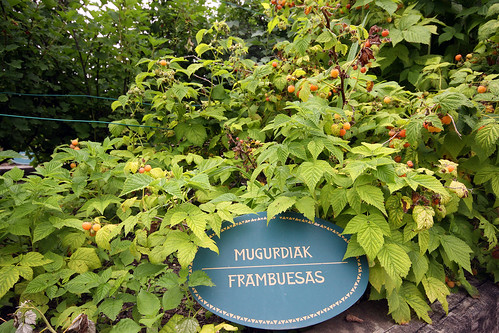

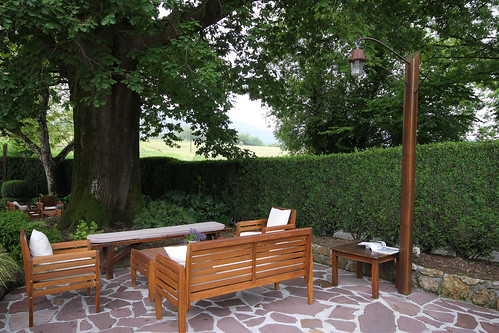
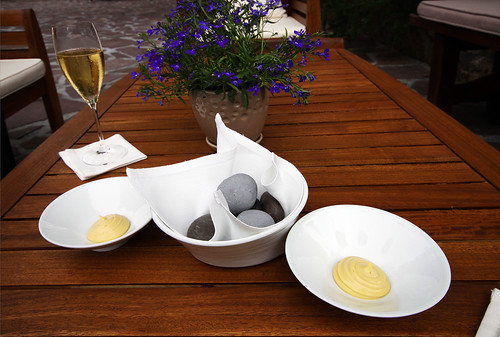

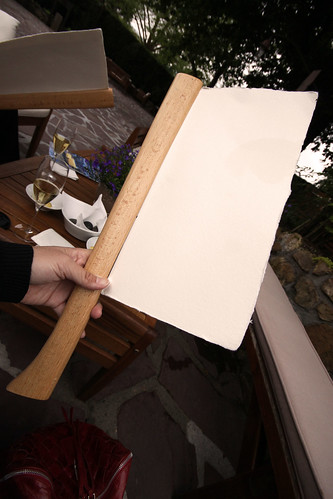



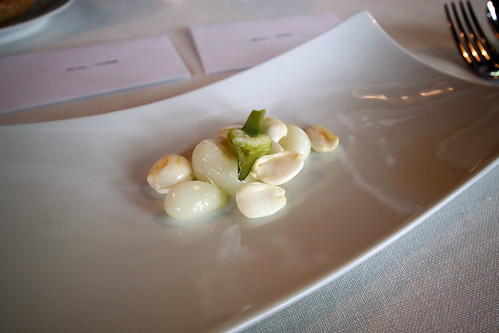

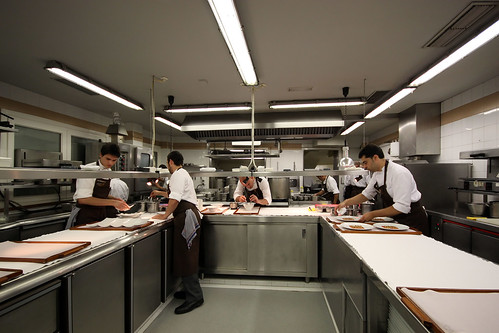

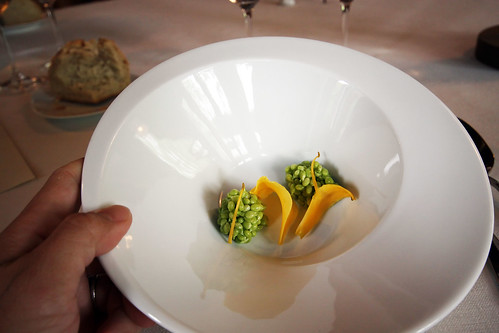

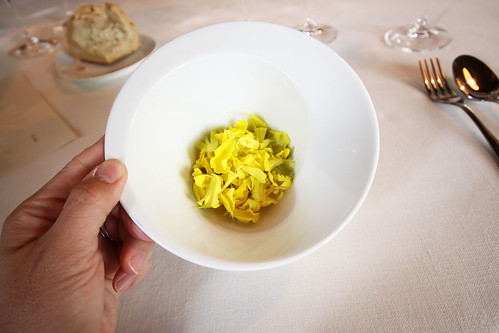

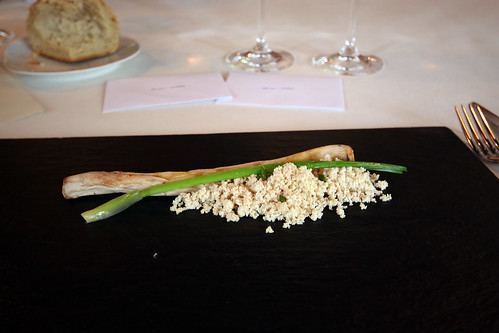
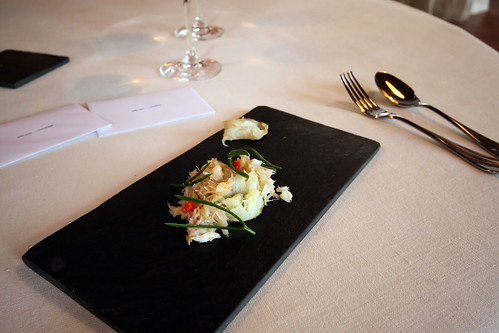
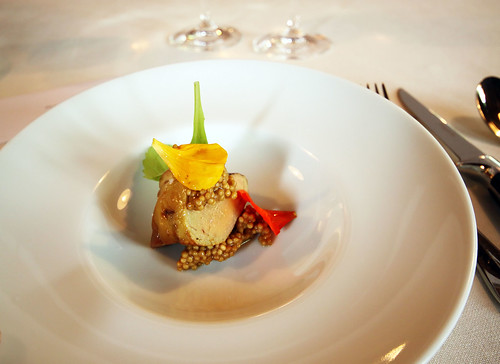
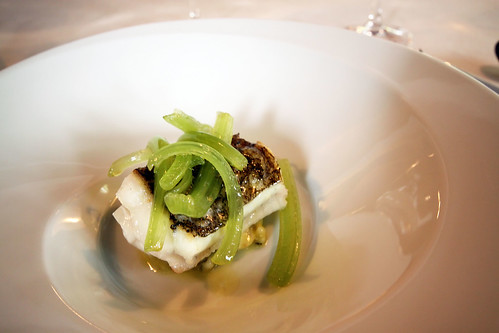
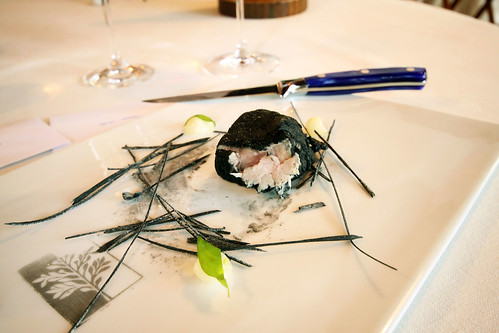
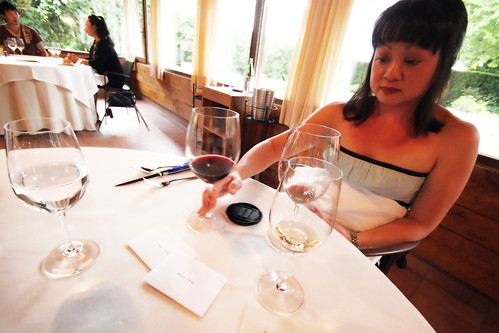
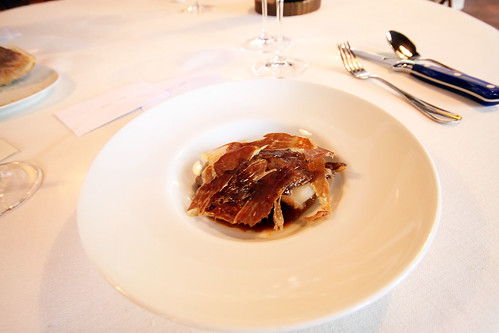
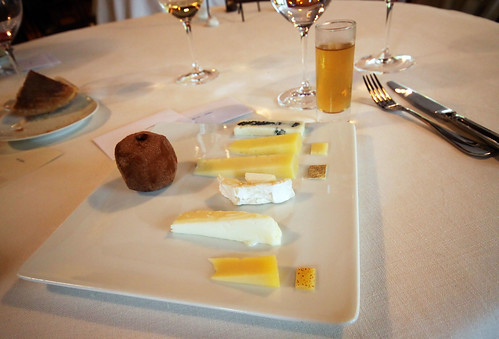
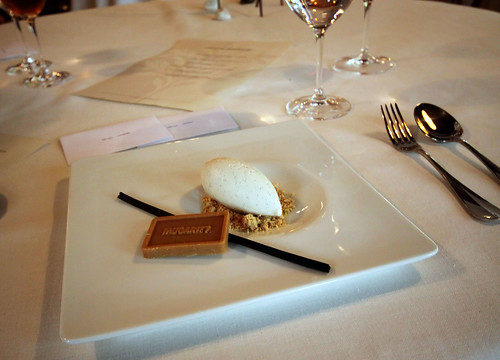

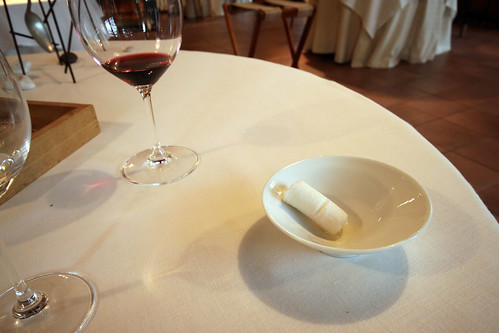

Pingback: Saison | Tabemasu()